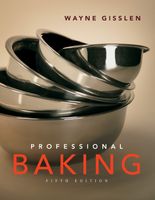Advertisement
Ancient Leavened Breads
Appears in
Published 2008
A grain paste left to stand for a time sooner or later collects wild yeasts (microscopic organisms that produce carbon dioxide gas) from the air and begins to ferment. This was, no doubt, the beginning of leavened (or raised) bread, although for most of human history the presence of yeast was mostly accidental. Eventually, people learned they could save a small part of a dough to leaven the next day’s batch.
Small flat or mounded cakes made of a grain paste, whether leavened or unleavened, could be cooked on a hot rock or other hot, flat surface, or they could be covered and set near a fire or in the embers of a fire. The ancient Egyptians developed the art of cooking leavened doughs in molds—the first loaf pans. The molds were heated and then filled with dough, covered, and stacked in a heated chamber. These were perhaps the first mass-produced breads. Breads made from wheat flour were costly and affordable for only the richest people. Most people ate bread from barley and other grains.

